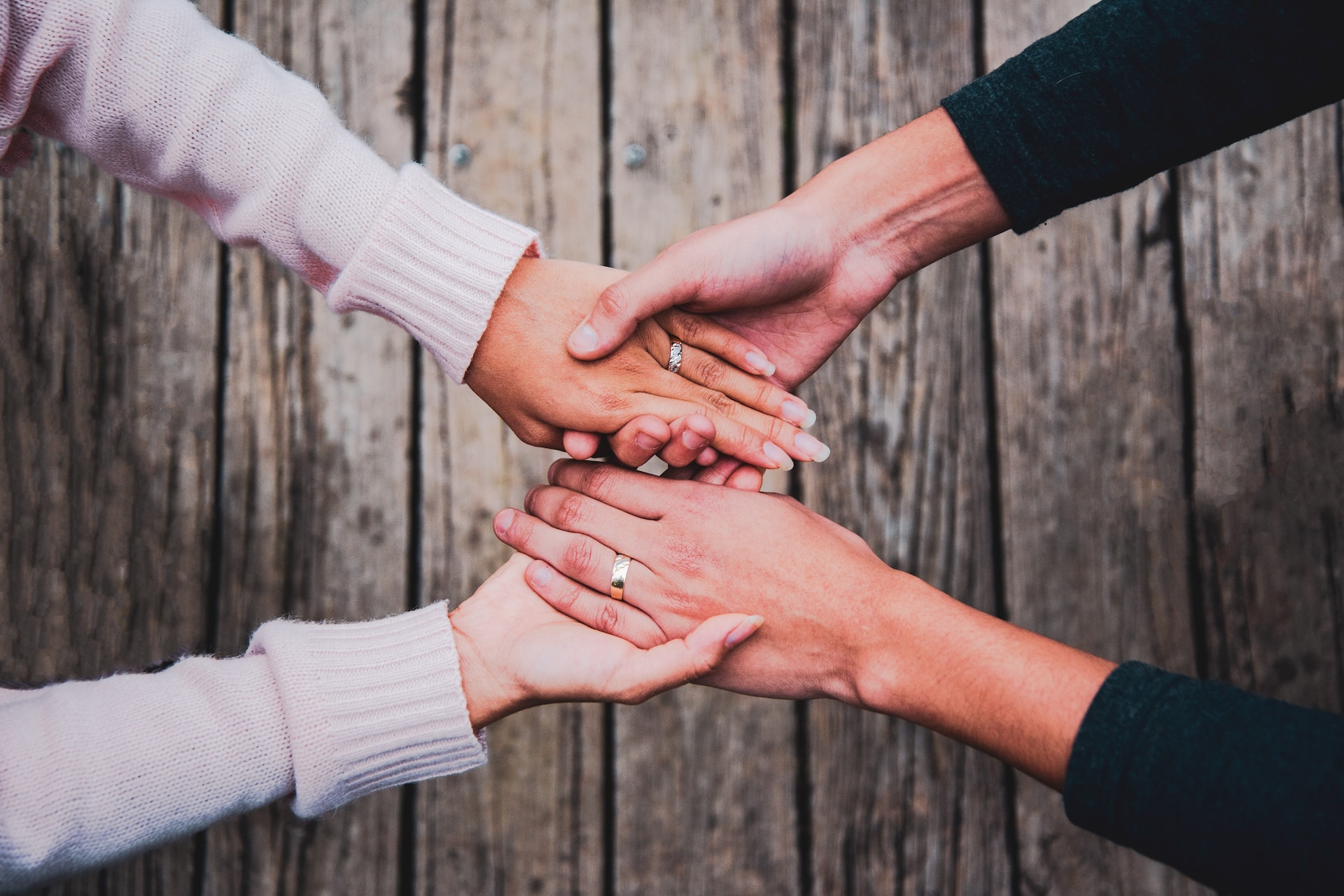Attachment patterns lie at the core of human relationships. The attachment theory can explain how we shape our perceptions, behaviors, and interactions with others. And it can shed light on why you like particular people or why your previous relationship brought so much pain.
Our attachment styles, developed during early childhood and shaped by subsequent experiences, profoundly impact our romantic relationships and dating experiences. You may feel insecure and clingy in a relationship if you have an anxious attachment type. Or you can notice that your love for independence often ruins your relationships if you have the avoidant type. However, you can learn to fix your attachment tendencies, especially, while dating someone with a secure type.
In this article, we will explore different attachment styles and delve into their effects on relationships. If you want to start dating mindfully, knowing your attachment type is one of the first steps to take.

The History of Attachment Theory
The history of attachment theory traces back to the 20th century, primarily attributed to the pioneering work of British psychologist John Bowlby. Bowlby’s revolutionary ideas emerged from his observations and studies on the impact of early childhood experiences on human development and relationships. In the 1930s, Bowlby began working as a psychiatrist, focusing on child psychoanalysis. Influenced by his experiences working with troubled children and his own childhood experience. Bowlby believed that these early bonds played a critical role in shaping a child’s emotional and social development.
Bowlby’s initial theories were formalized in his publication “Maternal Care and Mental Health.” His seminal trilogy, “Attachment and Loss” (1969-1980), outlined the theory’s principles and expanded its application to various aspects of human behavior. Bowlby emphasized that attachment bonds formed early in life served as a foundation for future social relationships and influenced an individual’s emotional and psychological well-being.
Mary Ainsworth, a developmental psychologist and colleague of Bowlby, made significant contributions to attachment theory through her research. Ainsworth developed the “Strange Situation” experiment, which assessed infants’ attachment behaviors when separated and reunited with their primary caregivers. This experiment led to the identification of distinct attachment styles, including secure, anxious-ambivalent (disorganized), and avoidant.
Later numerous researchers expanded and refined attachment theory. Scholars like Mary Main, Mary D. Salter Ainsworth, and Mary Rothbaum conducted studies that revealed additional attachment styles and highlighted the impact of attachment on later relationships, psychological well-being, and even physical health.
Today, attachment theory continues to be a fundamental framework for understanding human relationships and the impact of early experiences on individuals’ attachment styles and patterns of relating to others.

What Are the Four Attachment Styles?
Secure Attachment Style
The secure attachment style is characterized by a positive view of oneself and others, comfort with intimacy, and the ability to balance independence and closeness in relationships. According to the data provided by Princeton University, the secure attachment style is the most common one and typical of 60% of people.
How Is It Formed?
This type is developed when caregivers provide a reliable and nurturing environment for the kid. This involves responding promptly and sensitively to the child’s cues for attention, affection, and soothing. Simple actions, such as holding a baby lovingly and responding to the baby’s needs, support the social and emotional development of the kid. Caregivers create a secure base for the child, offering support and encouragement while allowing them to explore the world confidently. The child develops a sense of trust in their caregivers, leading to a belief that their needs will be met and that they are worthy of love and care. These kids feel safe, understood, and valued.
How Do People with a Secure Attachment Type Behave?
People with the secure attachment type usually have trust in themselves and others, which lets them establish and maintain healthy emotional connections. They are comfortable with intimacy and can openly express their thoughts, feelings, and needs. They communicate easily, actively listen to their partners and explain their own thoughts and emotions with clarity. Such people value open and honest communication and try to find ways to resolve conflicts without quarrels.
With a strong feeling of self-worth, they easily cope with challenges and conflicts. They are less likely to experience extreme emotional highs and lows. They feel comfortable sharing their emotions. People with a secure attachment style are often satisfied with their relationships and become nurturing and responsive parents themselves. In general, it is a positive, loving, and trusting partner.
Avoidant Attachment Style
People with an avoidant attachment pattern have a strong desire for independence and emotional distance, and experience difficulty in forming intimate connections. According to Princeton University, approximately 25% of individuals display this attachment pattern.
How Is It Formed?
Avoidant attachment typically develops in response to inconsistent or rejecting caregiving during childhood. Children with an avoidant attachment type may have caregivers who are emotionally unavailable, dismissive of their needs, or neglectful. These experiences lead the child to learn that relying on others for support and comfort may not be reliable or safe. As a result, they develop a self-reliant coping strategy, suppressing their emotional needs and emphasizing independence. Most often avoidant attachment results from a particular behavior of parents, such as leaving a kid without care, expecting them to be independent, showing disapproval when the kid asks for support, and rejecting kids. So, avoidant patterns can develop even in a good family where parents are just too busy making money.
How Do People with an Avoidant Attachment Type Behave?
Individuals with an avoidant attachment style tend to keep emotional distance in relationships, avoiding deep emotional intimacy and vulnerability. It can be hard for them to express their emotions. They prioritize independence and self-reliance and can have real difficulty depending on others or seeking support. It is easier for them to solve problems on their own. The fear of closeness makes them feel uncomfortable with too much emotional connection. That is why they often create emotional barriers in relationships. Such people don’t trust others and have a fear of being hurt or rejected.
Establishing and maintaining deep emotional connections is a challenge for these people. They may find it hard to express their needs or provide emotional support to their partners. Their traits don’t let them establish the needed level of intimacy. Too much closeness will make them feel uncomfortable. People with an avoidant attachment style prefer to stay away from serious relationships.
Anxious Attachment Style
Such people are characterized by a strong desire for closeness and fear of abandonment. According to PubMed, only 5% of people have this attachment pattern.
How Is It Formed?
This attachment type is formed as a result of inconsistent caregiving during childhood. Caregivers were unpredictable in their responses, sometimes providing nurturing and responsive care and other times being unavailable or rejecting. These experiences lead the child to become alert to potential dangers and develop a heightened sensitivity to signs of rejection or abandonment. The child can’t understand what to expect from the caregiver next time and becomes very anxious. In addition, sometimes parents made their kids responsible for how they felt, and this could also contribute to the development of anxious attachment patterns.
How Do People with an Anxious Attachment Type Behave?
When these people grow up, they often feel that they are responsible for how others feel and as a result often become codependent. These people have a strong desire for emotional closeness and reassurance from their partners. They may seek constant validation and attention, fearing that their partners will leave them. Being so afraid of abandonment, they may constantly worry about their partner’s commitment and overanalyze their actions. Anxiety makes these people heavily rely on their partners for validation, self-worth, and emotional support.
Relationships are quite a challenge for people with the anxious attachment type. They often feel jealous and insecure and have difficulty expressing their needs. As a result, they can become possessive and show passive-aggressive behavior, which exhausts both partners.
Disorganized Attachment Style
People with the disorganized attachment style express the traits of both anxious and avoidant types, that’s why their behavior is very inconsistent and they show strong difficulty trusting others. According to Insider, around 5% of people have this attachment type.
How Is It Formed?
Usually, this type is formed when a child’s caregivers are simultaneously a source of comfort and a source of fear. The development of this pattern can be the result of trauma, neglect, and abuse. Inconsistent behavior of caregivers confuses the kid and they can’t develop a stable attachment to parents.
How Do People with a Disorganized Attachment Type Behave?
A person with a disorganized attachment type can be simultaneously very scared of losing their partner and at the same time unwilling to let them be closer. They deeply want emotional connection but are too scared of the pain that it can bring. As a result, such people can experience internal conflicts and show contradictory behaviors. Usually, these people are very emotional and have difficulty maintaining emotional stability in relationships. A strong fear of pain will often make them manifest self-protective behavior. These people see others as unpredictable, while in reality they themselves behave inconsistently due to their internal conflicts.
Check this table below to quickly compare how four attachment types behave in relationships.
| Attachment Style | Secure | Anxious | Avoidant | Disorganized |
| View of Self | Positive | Negative, feeling unworthy | Positive/Negative | Negative |
| View of Others | Positive | Positive | Indifferent | Negative |
| Comfort with Intimacy | Comfortable | Craves, is very clingy | Avoidant | Ambivalent |
| Independence | Balanced | Dependent | Emphasized | Ambivalent |
| Attitude to Being Alone | Comfortable | Uncomfortable | Comfortable, they don’t need other people | Uncomfortable |
| Trust | Trusts easily | Distrustful | Distrustful | Distrustful |
| Communication Style | Confident, open, easy to connect with | Needs approval, sensitive to criticism, expressive | Detached, don’t want to express feelings | Varies |
| Relationship Patterns | Healthy, stable | Fear of rejection and abandonment | Emotionally distant | Volatile, unstable, fear of rejection |
| Response to Conflict | Constructive | Reactive | Avoidant | Varies, can’t regulate emotions |
| Emotional Support | Available, can seek support if needed | Constantly seeking | Emotionally detached | Unpredictable |
| Emotions | Balanced, regulates emotions easily | Heightened, has difficulty regulating emotions | Suppressed, has difficulty regulating emotions | Intense, has difficulty regulating emotions |
| Self-Esteem | High | Low | High | Low |
| Relationship Satisfaction | High | Fluctuates, feels unworthy of love | Low | Low, strong anxiety |
How Do Attachment Types Influence Relationships?
The attachment types of partners influence the future of relationships and even how challenging they will be for both partners. For sure, the best combination is two secure attachment types. However, the secure attachment type can also get along very well in relationships with other types.
People with the Secure Attachment
They will see the vulnerability of an anxious partner and do their best to mitigate it. People with secure attachments won’t be bothered about their partner being too clingy. They also won’t be scared of rejection and that’s why they will be able to understand avoidant types and give them the needed freedom. Finally, secure attachment types can even find a common language with the disorganized type balancing their mood swings and inconsistent behavior.
People with the Anxious Attachment
The best option is for sure to meet a secure attachment type, however, they can also learn to put up with the inconsistent behavior of disorganized types. In particular, they will understand their partner well when they behave in an anxious style too. Though probably the worst option for an anxious person is the avoidant type, they are often attracted to these people. Still, soon this relationship will end, because the avoidant type will always trigger uncertainty in the anxious type.
People with the Avoidant Type
Again, the most rewarding relationship will be with the secure attachment type. The relationship with the disorganized type will be so-so with periods of harmony and catastrophes. The worst possible combination is with the anxious type because they will look too clingy and bothering for the avoidant type. While the avoidant type will always feel not enough for the partner, they will indeed provide insufficient care and attention. Unfortunately, avoidant and anxious attachment types are often attracted to each other in the beginning, but this relationship is doomed to failure.
If you want to learn about other factors that influence how we match other people, check our MBTI compatibility guide.
How to Understand Your Attachment Type?
Understanding your attachment type can provide valuable insights into your relationship patterns and help you start dating mindfully and, in the end, find an ideal partner. There are a few steps that you can do to have an understanding of your type.
1. Reflect on Your Early Experiences
Consider your childhood (especially, the first two years) and the relationships you had with your caregivers. Think about how they responded to your needs, whether they were consistent or unpredictable, and how they made you feel. Reflecting on these experiences can offer clues about your attachment style. Ask your close people and relatives how your caregivers treated you in your early years. You can also ask your relatives how you behaved as a baby. Did you cry when your parents were leaving you alone? Did you stop crying when they came back? Did you ignore them even if they came back?
2. Identify Recurring Relationship Patterns
Take note of the patterns that emerge in your relationships. Do you tend to seek constant reassurance and validation from your partners? Do you have difficulty trusting others or become anxious when your partner is not available? Do you start to worry when your partner gets too close to you? Recognizing these patterns can help you understand your attachment style.
3. Explore Your Emotional Reactions
Pay attention to your emotional reactions within relationships. Do you tend to become overwhelmed with fear or anxiety when there is a perceived threat of rejection or abandonment? Do you feel uncomfortable with emotional closeness or find it difficult to express your needs? Understanding your emotional responses can provide insights into your attachment style.
4. Take an online test
Though the exact understanding of your type you can get only with a professional, you can still take an online test in attachment styles as a starting point and get some valuable insight.
5. Consider Professional Guidance
If you want a more comprehensive understanding of your attachment style, consider seeking the help of a professional.
How to Fix Your Attachment Type?

It’s important to note that attachment styles are not fixed and can be influenced by personal growth, therapy, and new relationship experiences. If you have noticed that you have some patterns in your behavior, it is already half of the solution. At this moment, it is important to understand that blaming your partner won’t help you. Instead, focus on how you trigger conflicts with your behavior.
Read More About Attachment Types
Get to know more information about your attachment type to get some insights about your patterns. Most likely, you will start to notice the things you didn’t think about before.
Talk to a Therapist
One of the most efficient ways of fixing attachment patterns is to talk to a therapist and do the exercises that they give you.
Go to a Therapist as a Couple
Whether you are in a relationship with a secure attachment type or not, it is a good idea to talk to a couple’s therapist. A professional can help both of you understand the patterns in your behavior that influence the quality of your relationship. And you will be able to talk in a safe environment about really sensitive things.
Find Those Who Managed
True stories of those who have already gone through this huge transformation from insecure to secure attachment can inspire you to work on yourself. You can get some useful recommendations from people who perfectly understand how it is to be in your shoes.
Look for Partners with Secure Attachment Types
Try to find people who match your core values and have a secure attachment type. Engaging in a relationship with a secure attachment type can help you understand how it works in reality. You will see positive behaviors and learn how to trust by following a real example. With time this positive experience will help you change your negative patterns.
Improve Your Self-Esteem
A negative attitude to yourself can aggravate the behaviors typical of insecure attachment, so the best way to mitigate them is to work on improving your self-esteem. Learn bit by bit to treat yourself with care and warmth, and you will see how these emotions start to transform you from the inside.
Be Ready to Wait
Attachment type can’t be changed in a day, you will have to spend time working on your patterns and emotions. Keep your continuous effort and you will see how transformation slowly happens.
Be Yourself
Learn to stay yourself and clearly express your emotions. Many insecure types tend to pretend to be someone more convenient and better than they really are. However, they can’t do it all the time of course, and insecurity only keeps growing. What if the partner won’t like the real you when you are already madly in love? Show your real self from the very beginning and let your partner discover your true personality.
How to Understand the Attachment Type of Your Partner?
As attachment types are developed in childhood, the best way to get an understanding of your partner’s attachment patterns is to ask some questions and analyze the answers. Remember that some people will need time to first gain some trust, so probably it is better to leave your small research at least to the fourth date or so.
What Was Their Childhood Like?
Ask about the early childhood of your partner. People with secure attachment patterns have a very balanced vision of their early ages. They remember both good and bad things and easily share them. Avoidant and disorganized types will be puzzled by this question and try to change the subject. They will feel uneasy to speak about their painful childish moments and try to hide them. Anxious people will speak freely about their childhood, but you will hear their worries in how long they talk and how they try to look good.
How Did They Get Support?
Another good question to ask is about the people who gave this person support, especially in their childhood. While secure attachment types will have a clear answer, all the rest will either show some still hurting pain or will be unsure of who to name as those who supported them.
How Did They Break Up?
And finally, you can ask your partner to share their feelings about the previous relationship. People with the secure attachment type look at their relationships rationally, accepting the good and bad stuff. Anxious people will still have strong bad emotions and pain. Other types will again become self-protective and unwilling to answer.

How to Date Partners with Particular Attachment Types?
Avoidant Attachment Type
If you see that your partner has an avoidant attachment style, you can follow a bunch of rules to minimize the negative effect of their behavior patterns on you. First, you need to accept that they will get distant from time to time. Give them this space and don’t pursue them. Stay calm, they will take a break and return – they always do.
Also, remember that they are too sensitive, so try to formulate all your negative feelings as positive requests rather than criticism. Focus on the positive things in the relationship and don’t let yourself become overly critical. And for sure, never demand or manipulate, this can only scare the avoidant type and encourage them to hide. Avoidant types are scared of strong emotions and insecurity, so every time you want to start a sensitive topic, first, calm down, second, show that you value relationships, and, third, learn to control your emotions even if the discussion goes in an unexpected way.
For sure, it won’t be easy for you, and most likely you will need to find emotional support outside your relationship – in friends and relatives. But remember not to take things personally and with time you can help your partner develop healthier behaviors.
Anxiously Attached Partner
As you probably remember, anxious people need constant reassurance that everything is fine in the relationship. So, all the things you can do will be linked in some ways to creating an atmosphere of security. Tell openly about your feelings and needs, and encourage your partner to share what’s on their mind. When your partner starts to talk, be there to listen actively and attentively, without judgment and interruption. Remind them often how much you care and love them. These words will never be excessive for an anxious partner. And for sure, don’t break your promises. The hardly-earned trust of an anxious partner is so easy to lose.
When you start a relationship with this person, you will need to accept that it will take a lot of patience and understanding from you, however, bit by bit you will earn enough trust. Still, it doesn’t mean that you should compromise your own comfort for the sake of your partner. It is more about understanding and learning to live together while still keeping the things that are important to you.
Disorganized Attachment
Before we go any further, you should remember the main thing – get ready for challenges and find the needed patience and understanding inside of you. Your partner may look strange and inconsistent, and they will need your help to establish a strong bond.
One of the best skills to learn is to communicate openly. When you set an example of how you can speak freely and without criticism about feelings, it will get way easier for your partner to open up as well. Remember that all the strange actions are likely to come from deep inner fear of your partner. If you try to understand their concerns, acknowledge their emotions, and show them that you can be trusted, your partner will feel more secure with you. However, if strong contradictory behaviors remain even despite a very healthy relationship and go further into marriage, it is a good idea to go to a therapist together and solve this problem.
Conclusion
Attachment theory is a good example of how our childhood can influence our whole future life. Good news, mindful dating, paying attention to your patterns, and taking steps to fix your attachment type can help you overcome all the negative effects related to it. You will feel emotional security in your relationships and won’t doubt your partner every time you don’t get an immediate answer. You will also learn to handle conflicts better, make the connection between you way deeper, and, of course, get way more satisfaction with your relationship.


